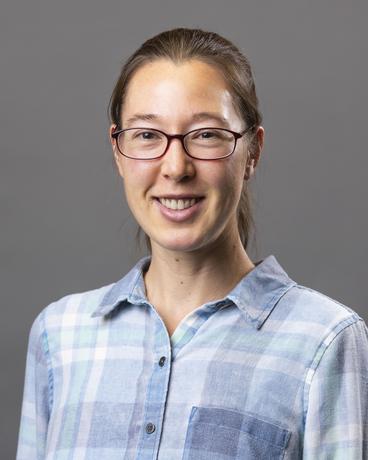NRRI researchers are keeping up with conversations about climate change. The focus is now on what we can do to adapt to the changes underway and yet to come.

Geographical Information System Analyst Kristi Nixon is an important part of that conversation for Minnesota’s forest managers.
She worked with a large team of researchers, modelers and tech specialists to spatially model a comprehensive set of ecosystem responses to potential outcomes of varying forest management decisions – and the impact of climate change on those scenarios.
The program is called ForCAST – Forest Change Adaptation Simulation Tool – and Nixon is kept busy with spatial analysis support, project data management and content writing. This program has been funded by the Minnesota state legislature and is now targeting all forested areas across the state.
“I've learned a lot about the technical aspects of modeling complex ecological and social processes," said Nixon. "We included forest biomass harvest, climate metrics, wildlife habitat suitability, water quality metrics and socio-economic values.”
High flyer
Nixon joined NRRI in 2016 after achieving a GIS Certificate at the University of Wisconsin, Madison, on top of her master’s degree in Conservation Biology and Sustainable Development. She is involved in many land and water research projects. She also pilots a fixed-wing and quad-copter drone for remote sensing of NRRI project sites.
Her drone skills have been used at NRRI’s Fens Restoration Site near Zim, Minn., where NRRI researchers are monitoring a drained wetland restoration effort. Nixon captured seasonal vegetation imagery throughout the growing season. She uses object-based imagery analysis to try to delineate vegetation stand types, and further classify the stands with data gathered on the ground using random forest machine learning.
“The broad diversity of expertise at NRRI, and our mission of helping make natural resource management decisions in Minnesota at a broad spatial and temporal scale, really resonates with me,” she said.
Nixon is also involved in multiple professional GIS user groups and attends conferences to share knowledge and experiences with others in the field. She enjoys the opportunity to work across many disciplines at NRRI and collaborate with external stakeholders, including University of Minnesota GIS colleagues.
Central Support
The GIS world is built around complex technologies and large amounts of data storage and processing. Nixon relies on NRRI’s Information Technology team, Chris Heim and Greg Grunwald, for technical support in the lab.
“They’re always very responsive and helpful,” said Nixon. “They help out with a range of issues involving hardware and software, and network and system administration.”
Feet on the ground
Last year, Nixon started training for half marathon trail races. She enjoys getting out and exploring new trails while building strength and endurance.
“The half marathon distance feels like my favorite distance to race now, and I’ve enjoyed getting to participate in those longer races throughout the running season,” she said.